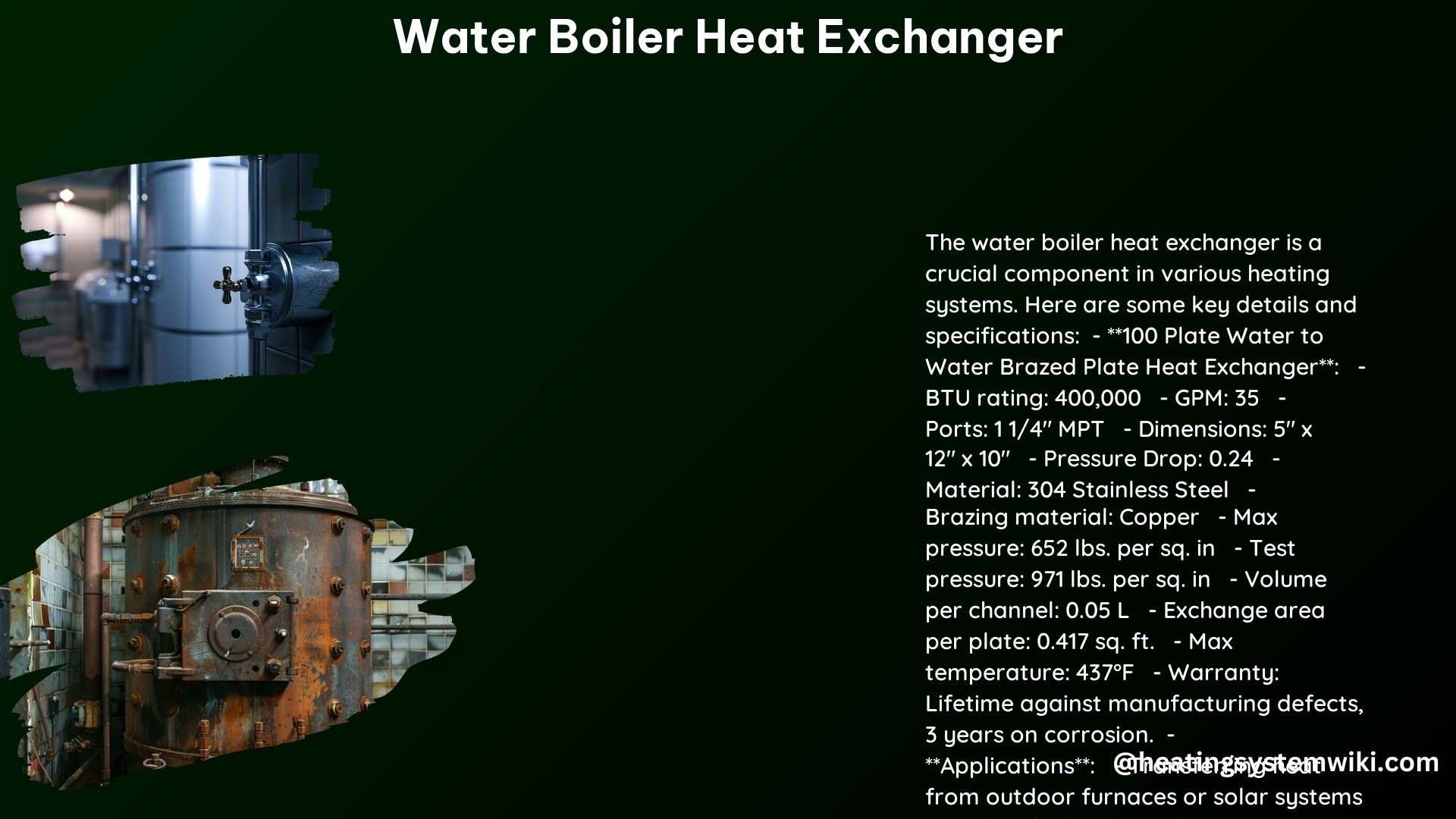A water boiler heat exchanger is a critical component in a water boiler system, responsible for efficiently transferring heat from the boiler to the water or air. This comprehensive guide delves into the common types of heat exchangers used in water boilers, their material composition, performance characteristics, and best practices for ensuring optimal heat transfer and maintenance.
Common Types of Heat Exchangers Used in Water Boilers
Water-to-Air Heat Exchangers
- These heat exchangers are designed to transfer heat from the hot water in the boiler to the surrounding air, making them a popular choice for home heating systems.
- They typically consist of small copper tubes with metal fins attached, which are heated by the circulating hot water from the boiler. A blower fan then blows air through the fins and tubes, producing warm air for distribution.
- Water-to-air heat exchangers are known for their high BTU ratings, often ranging from 100,000 to 500,000 BTU/hr, depending on the size and configuration of the unit.
Water-to-Water Plate Heat Exchangers
- These heat exchangers transfer heat from one circulating liquid (usually water from the boiler) to another liquid without mixing the two liquids.
- They are commonly used in applications such as heating domestic hot water, in-floor heating systems, and industrial hot water systems.
- Water-to-water plate heat exchangers consist of alternating stainless steel plates (often 304L grade) with copper brazing material, through which the hot water from the boiler and the water to be heated pass, facilitating efficient heat transfer between the two liquids.
- These heat exchangers are designed to maximize heat transfer rates while preventing any mixing of the two liquids, ensuring a high level of efficiency and safety.
Material and Performance Differences

Material
- Water-to-air heat exchangers typically utilize copper tubes with metal fins, often made of aluminum or steel, to optimize heat transfer to the surrounding air.
- Water-to-water plate heat exchangers are commonly constructed with 304L stainless steel plates and copper brazing material, providing excellent corrosion resistance and durability.
Performance
- Water-to-air heat exchangers are engineered to excel at transferring heat to the air, with a focus on achieving high BTU ratings and efficient air circulation.
- Water-to-water plate heat exchangers are designed to maximize heat transfer between the two liquids, with a emphasis on preventing any mixing and maintaining a high heat transfer rate, often in the range of 400,000 to 1,000,000 BTU/hr for larger units.
Ensuring Optimal Heat Transfer and Maintenance Practices
Optimal Heat Transfer
- Proper installation and sizing of the heat exchanger are crucial for achieving optimal heat transfer performance. Factors such as flow rate, pressure drop, and system design must be carefully considered.
- For water-to-air heat exchangers, ensuring the correct air flow rate and temperature rise across the unit is essential for maximizing efficiency.
- In the case of water-to-water plate heat exchangers, maintaining the appropriate flow rates and pressure drops on both the boiler water and the heated water sides is critical for optimal heat transfer.
Maintenance Practices
- Regular cleaning and inspection of the heat exchanger are necessary to prevent corrosion, scale buildup, and efficiency loss over time.
- Using corrosion inhibitors, such as Liquid Armor Water Treatment, can help protect the heat exchanger from corrosion and extend its lifespan.
- Repairing or replacing the heat exchanger as needed, based on periodic inspections and performance evaluations, is essential for maintaining optimal system performance.
Technical Specifications
Example Specifications: 100-Plate Water-to-Water Brazed Plate Heat Exchanger
- BTU Rating: 400,000 BTU/hr
- Flow Rate: 35 GPM
- Port Size: 1 1/4″ MPT
- Dimensions: 5″ x 12″ x 10″
- Pressure Drop: 0.24 psi
- Material: 304 Stainless Steel Plates
- Brazing Material: Copper
These technical specifications highlight the high-performance capabilities of a water-to-water brazed plate heat exchanger, demonstrating its suitability for a wide range of commercial and industrial applications, such as heating domestic hot water, in-floor heating systems, and industrial process heating.
References
- OutdoorFurnaceSupply.com – Water to Air Heat Exchangers
- TwinWatersEnergy.com – Central Boiler Heat Exchangers Water-To-Air
- OutdoorBoiler.com – Heat Exchangers
- TheLogBoiler.com – 100 Plate Water to Water Brazed Plate Heat Exchanger
- Amazon.com – Boiler Heat Exchanger
